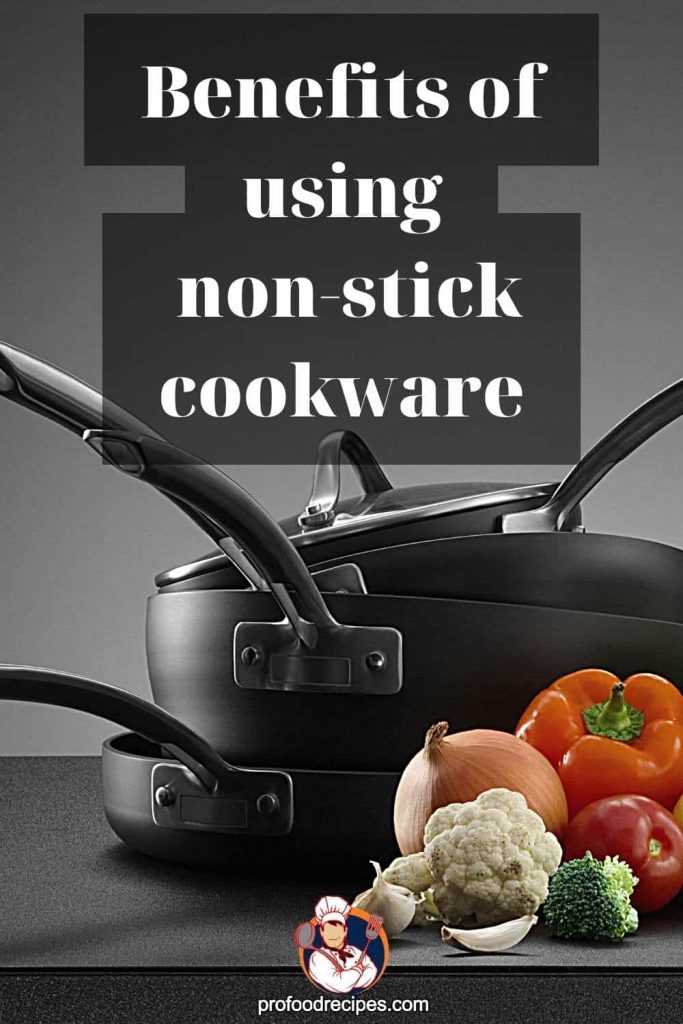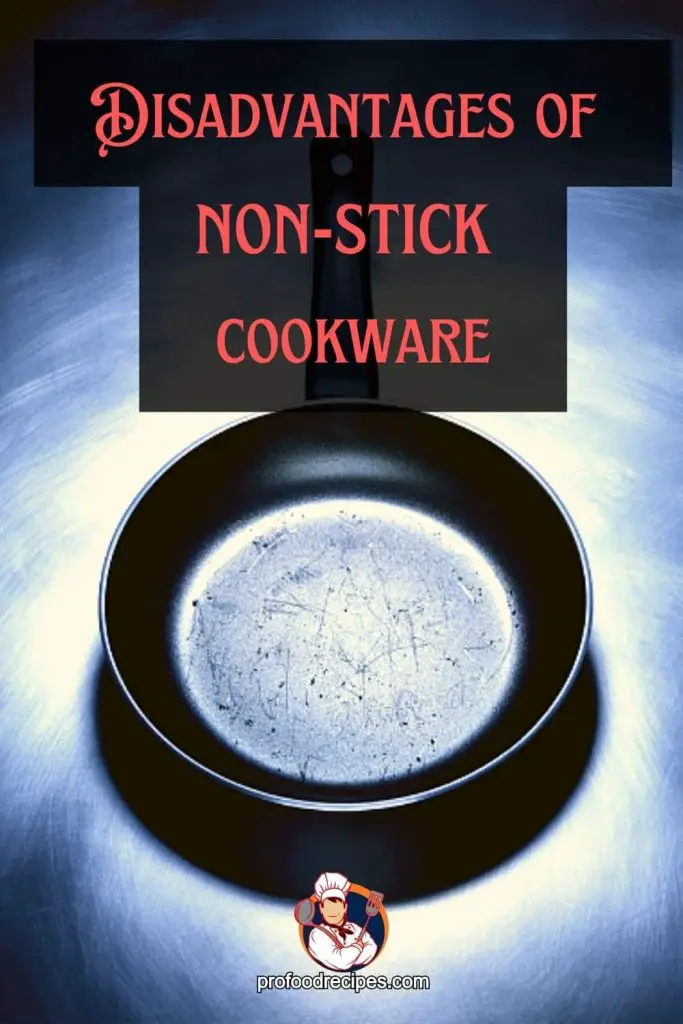Last Updated on June 27, 2022 by Amanda P. Brown
If you are wondering, is non stick cookware safe? Then the simple answer is yes. Although, there are numerous debates concerning the safety of Teflon-coated non-stick cookware. Specific research says that non-stick cookware is safe.
Teflon was originally made with the chemical PFOA, which has caused health experts to raise concerns about its use. But, Teflon was free of PFOs in the year 2002. To now, non-stick and Teflon cookware has proved safe for daily home cooking, so far as the temperature does not cross 500 degrees F.
Now take a detailed look at this article for additional information.
What Is Non-stick Cookware? Is Non Stick Cookware Safe?
Table of Contents
Polytetrafluoroethylene (PTFE), sometimes known as Teflon, covers non-stick cookware such as skillets and sauce saucepans. Teflon is a fluorine, and carbon-based chemical made compound. It may only require a small amount of butter or oil, making it a healthy way to fry and cook.
Cleaning the pan is simple, thanks to its Teflon-coated non-stick surface. As it uses little or no oil, non-stick cooking is better for deep-frying and cooking.
In addition, the safety of non-stick cookware has been the subject of a decade of research. Overheating Teflon was also a topic of discussion in the studies. Regarding non-stick cookware and chemicals, concerns have focused on perfluorooctanoic acid (PFOA), which was once used but is no longer used today. As a result, today’s non-stick cookware is entirely safe.
7- Benefits of Using Non-stick Cookware

The advantages of using non-stick cookware are numerous. Here are a few reasons why non-stick cookware is the best option for regular cooking.
1. Offers Health Benefits
The health benefits of using non-stick pans are the most important reason. Compared to other materials such as stainless steel, non-stick cookware uses less oil and prevents food from sticking to the pan. A minimal amount of oil in meals means fewer calories, a lower risk of clogged arteries, and a lower intake of unhealthy fats.
2. Cooks Food Faster
Ceramic pans cannot be used on a high burner and are poor heat conductors, even though other cookware, such as cast iron pans, have non-stick qualities. Non-stick cookware distributes heat evenly, significantly reducing food preparation and minimizing waste.
As a result, you won’t need to spend hours in the kitchen to prepare a nutritious and delicious meal if you use non-stick cookware.
3. Complements Modern Kitchens
Due to the contrast of cleaning, stainless steel cookware becomes dull. Non-stick cookware is not only more durable than cast iron or copper cookware, but it also looks better and does not become lifeless after repeated use.
4. Make Cooking Easier
Nonstick will not trouble you in this aspect, while other materials, such as stainless steel, take more effort to develop heat and cook food. Cooking using non-stick cookware is easy, and you can efficiently multitask. In terms of cooking, non-stick cookware requires significantly more effort than regular cookware.
5. Easy Clean
It must change if your dish-washing regimen requires metal scrubbers, sweat, and perseverance. Because non-stick cookware does not use much grease, there is no fat layer to clean away. Non-stick cookware is less fussy than ceramic cookware, which requires constant cleaning to avoid oil accumulation that can limit its lifespan.
Nonstick just needs a soft sponge and soapy water to clean because it does not allow meals to cling or scorch to its surface, making your life much easier.
6. Lightweight and Safe
Non-stick pans are the lightest of all the cookware alternatives on the market. The non-stick cookware is also intended to be ergonomic and safe, with attractive handles and knobs that do not warm up to cause burns during cooking.
7. Affordable
Non-stick cookware is not only comfortable to use but also reasonably priced. It is far cheaper than cookware made of copper or iron. You can get three or four non-stick vessels for the price of one standard vessel.
Disadvantages of Non-stick Cookware

- Since most non-stick cookware is not dishwasher safe, cleaning will be difficult.
- Scrubbing pads and metal tools can cause damage to non-stick cookware.
- Some pet birds are sensitive to smells due to overheating non-stick cookware.
- It is only intended for use on the cooktop; also, it is not suitable in the oven.
- Cooking at high temperatures using non-stick cookware will cause the non-stick coating to melt.
- Using non-stick pans to brown or caramelize meals is more challenging.
5-ways You Are Ruining Your Non-stick Pans
Avoid the following frequent blunders to keep your cookware safe and in good shape.
1. Do Not Use Non-stick Sprays to Coat It.
Cooking spray residue can hard get rid of over time. In addition, the surface of the pan should be smooth enough for your stir-fry to slip right onto the serving plate.
2. Do Not Use Metal Utensils on Non-stick Pans.
When cooking using non-stick pans, avoid using any sharp metal or metal whisk. If you do this, the surface will scratch, and the coating may slide off the pan into your meal. You can use a plastic spatula rather than a metal spatula.
3. Avoid Generating Excessive Heat.
It’s decent to cook on medium heat in a non-stick pan. High-temperature cooking, such as sautéing or searing, should not be done in this pan because high temperatures shorten the pan’s life and release harmful substances into the atmosphere.
4. Never Allowing It to Smoke
The fume created by non-stick can not kill you, but it can make you sick. So avoid the pan from smoking; if the pans start to smoke, open a window or turn on a fan.
5. Never Scrub the Pan Too Hard.
Scrubbing the non-stick surface too aggressively can ruin the coating. Rather than washing harshly, you should handle your non-stick pans with care so that they last a long time.
Which Non-stick Coating Is Safe?
Non-stick cookware with a PTFE coating is the healthiest option on the market. PTFE is the most excellent slick surface on the market since it is FDA approved and verified secure by the US Consumer Safety Commission.
Is Scratched Non Stick Cookware Safe?
Scratches indicate that the non-stick Teflon surface has been weakened, and chemicals may cause flak off into your meal. That’s not good! Once a pan has been scratched, it must be discarded for safety reasons.
When Should You Throw Away Nonstick Pans?
Non-stick pans are obviously not indestructible. Non-stick pans should replace every five years at the absolute least. Meanwhile, you should inspect your pans regularly and cease using them if they get damaged, warped, or discolored.
What Happens When Non-stick Coating Comes Off?
If the non-stick coating on your cookware starts to wear off, it’s time to change them. While you may not become unwell due to the coating flaking or peeling into your meal, you may consume potentially harmful substances.
Are All Non-stick Pans PFOA Free?
Even while modern Teflon pans claim to be PFOA-free, many often include other materials such as a PTFE coating. If you’ve come to rely on the ease of non-stick surfaces, you’re in good fortune today’s market is filled with nontoxic, non-stick cookware.
Is Stainless Steel or Non-stick Better?
Cookware made of stainless steel provides the best surfaces for browning food. In the kitchen, non-stick cookware, on the other hand, is more durable and sturdy.
Do Chefs Use Non-stick Pans?
The hotel sector doesn’t mess around with delicate pots and pans. They go from a scorching hot burner to the sink for every service. This is why chefs prefer steel and cast-iron pans over those with a brittle coating.
Does Olive Oil Ruin Non-stick Pans?
Yes, olive oil can cause non-stick cookware to become ruined. You risk damaging the pan’s surface if you heat the oil over its smoke point or high temperature in non-stick pans. On the other hand, Olive oil seldom causes substantial harm when used in a non-stick pan over low heat.
Should You Preheat a Non-stick Pan?
No, you shouldn’t preheat your non-stick pan if it’s empty. Aluminum is typically used in non-stick pans, so it heats up faster than heavier stainless steel. However, you can warm the pan first with a modest amount of oil to gently cover the surface before adding the meal.
Final Verdict
What could be better than having kitchen equipment that inspires you to cook and feed your inner foodie? So, when selecting the best cookware, you need to consider various factors such as durability, maintenance, and pricing. Because non-stick cookware has the majority of these features and benefits, it has become more prominent than other types of cookware.
You don’t have to compromise between convenient cooking non-stick cookware and your family’s health. It’s simple to use, healthy, and quick to prepare. Also, I’ve included more information on non-stick cookware, including the pros and downsides that you might find helpful. So, after reading this article, you will have a better understanding of whether is non stick cookware safe or not.
You May Also Like to Read:
- How to Clean a Commercial Pizza Oven?
- Things You Need to Know about Instant Pot
- How to Take Care of Ants in the Kitchen?

